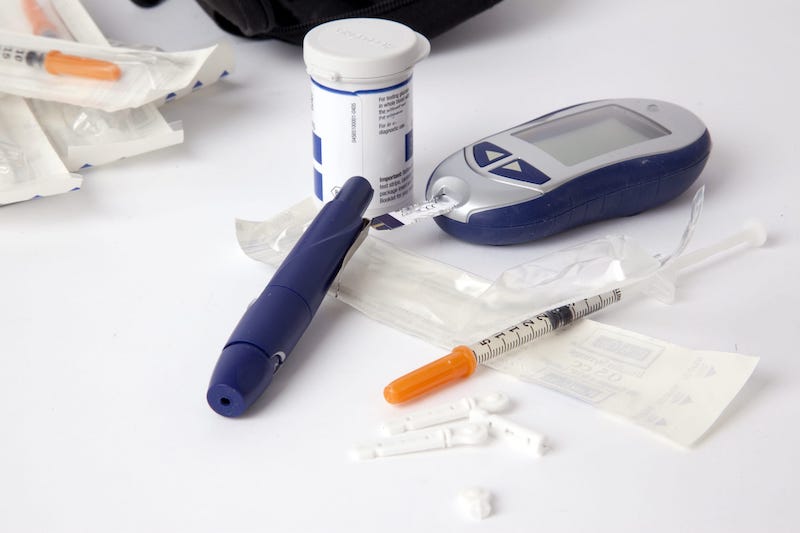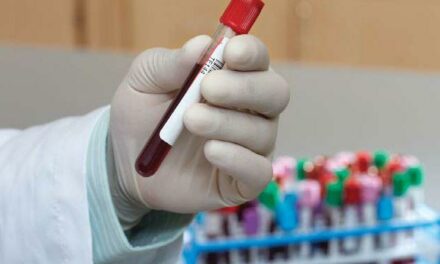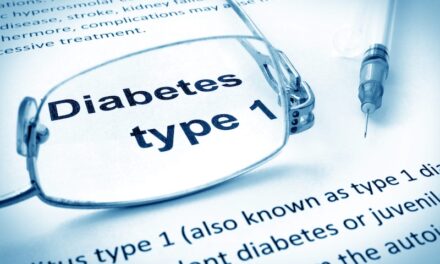While A1c is the diagnostic gold standard for determining if a patient has diabetes, there are a variety of A1c diagnostic tests that provide flexibility for clinical labs.
By Kady Stoll, MS, CCRC
Used since the 1970s, the significance of the A1c gained traction with the revision of diagnostic guidelines in 2010 when the American Diabetes Association (ADA) officially made the A1c a diagnostic criterion for diabetes. According to the Centers for Disease Control and Prevention (CDC), more than 34 million people in the U.S. alone are living with diabetes. In light of its prevalence and a growing population with so-called prediabetes, there’s an urgency to employ diabetes diagnostic tests that are both reliable and accurate.
In addition to the measurement of A1c, the ADA set forth other parameters for the diagnosis of diabetes mellitus, including the analysis of a fasting plasma glucose (FPG), oral glucose tolerance test (OGTT), or a random plasma glucose.
As A1c has emerged as a popular and convenient diagnostic tool, its accuracy is critical. Also known as glycated hemoglobin or HbA1c, it is produced by a nonenzymatic process, binding glucose molecules to the N terminal valine of the β chain of a hemoglobin¹—thus quantifying the average glucose level over a three-month window.
How Do Labs Measure A1c?
To measure A1c, facilities can employ one of the five assay methods currently available:
- Enzymatic Assay is the most commonly used method in healthcare screenings that provides a low-cost opportunity to determine a patient’s A1c, while efficiently handling large sample numbers².
- Boronate Affinity is a method that uses immobilized boronic acid, splitting the glycosylated hemoglobin from the non-glycosylated one³.
- Ion-Exchange High-Performance Liquid Chromatography (HPLC) is a molecular separation technique with many benefits, including efficiency, precision, and automation—and it only requires small sample sizes⁴.
- Capillary Electrophoresis is a technique that groups molecules by their electrical charge and their hydrodynamic volume⁵.
- Immunoassay is a speedy method that detects certain molecules by utilizing antibodies capable of binding to specific parts. To measure the A1c, antibodies bind with the N terminal glycated amino acid on the ß chain of the HbA molecule.
A1c Diagnostic Tests Sample Types
Testing precision and sample handling are critical in diagnosing and treating patients. There are three ways to collect a sample for A1c diagnostic tests:
- Venous Whole Blood, which is when a whole blood sample is taken from the vein.
- Finger-Prick Specimens are easily collected, require very little blood, and are done in-house. A drop is drawn into an A1c cartridge suction tube and inserted into an analyzer system where results become available within minutes.
- At-Home Kits offer patients the opportunity to collect their own blood samples via a finger stick. The sample is then either mailed to a lab or, if the kit is a self-check system, it will yield the A1c measurement within minutes.
According to a multicenter study on accuracy, the imprecision of the different A1c diagnostic tests samples varied from 1.30% to 2.03% CV using fingerstick samples and from 1.31% to 1.64% CV using venous samples⁶. An observational study on accuracy offered similar insight, concluding that both methods are reliable⁷.
Another recent study of more than 200 patients, tested three commercial at-home A1c kits using capillary blood specimens⁸. While some tests were able to yield a 0.3% absolute difference of the reference value when compared to venous samples, all three tests failed to meet the National Glycohemoglobin Standardization Program target of ≥90% measurements coming back within 5% of the value of a venous reference point⁸.
A1c Diagnostic Tests & Laboratory Errors
Most errors impacting test precision happen while collecting, transporting, or processing samples. Venous blood draws done for A1c diagnostic tests require lavender top EDTA tubes, which need to be filled sufficiently to maintain the blood/anticoagulant ratio in the tube. They also require inverting the specimen about eight times immediately after collection, to ensure proper mixing of the blood with the anticoagulant. Clotting and hemolysis are less likely in EDTA tubes due to the presence of an anticoagulant, however, they can still occur.
Furthermore, rough transports that lead to excessive shaking of the sample, or prolonged transports, including those experiencing significant temperature changes, can adversely affect the samples. Other potential errors include contamination, the use of expired reagents and testing solutions, instrumental errors, or environmental and procedural errors.
In addition, as a product of the healthcare worker shortage, staff is more rushed to perform patient care tasks, which makes collection errors more likely. The same is true for understaffed clinical laboratories, where technicians may lack the time to adequately process and analyze specimens.
Critical Patient Parameters
Quality control measures in laboratories, as well as adequate training for staff, can help eliminate some of the error potentials that can skew the results of A1c diagnostic tests.
However, determining the A1c value is a more multi-faceted process than that. A general rule of thumb is that any condition that can extend the normal lifespan of an erythrocyte or that’s able to lower red cell turnover can cause cells to cling onto glucose for longer time periods, hence, elevating the A1c measurement⁹.
Values can be altered in the upward realm due to medical conditions, such as⁹:
- Severe hypertriglyceridemia or hyperbilirubinemia
- Vitamin B12 and folate deficiency anemias
- Asplenia
- Uremia
The ingestion of certain medications, including opioids and salicylates, can further yield misleadingly high results⁹.
At the same time, various medical conditions will reduce the true A1c value, such as¹º, ¹¹:
- Blood loss
- End-stage kidney disease
- Splenomegaly
- Hemolytic anemia
Another critical factor clinicians need to consider when ordering A1c diagnostic tests is patient genetics. Known to be the predominant hemoglobin type worldwide, hemoglobin A is also referred to as “normal adult hemoglobin”¹². Any deviation from this “norm” is known as a hemoglobin variant, which is more likely to occur in people of African, South and Southeast Asian, and Mediterranean descent¹². Race and ethnicity, therefore, impact A1c results, potentially dictating the assay type required to analytically verify a patient’s A1c.
Some of the most common variants playing into A1c measurements include hemoglobin C, D, E, and S¹³. Depending on the region where the patient is from, a certain variant may be somewhat common. It’s, therefore, imperative for clinicians to pay special attention to a patient’s ethnic and racial background when ordering A1c diagnostic tests and ensuring the laboratory utilizes an adequate assay method based on the type of hemoglobin variant the patient has. If A1c values have been inconclusive in the past, clinicians should order a hemoglobin variant test to specify what type of hemoglobin the patient has. Alternatively, physicians can order other diagnostic tests, such as FPG or OGTT to provide the patient with a reliable diabetes diagnosis.
Best Practices for A1c Diagnostic Tests
As a crucial diagnostic criterion, clinicians, nurses, and laboratory staff alike need to carefully mitigate errors that could potentially skew A1c measurements and falsely elevate or lower a patient’s results. Human and laboratory errors can impact the collection and processing of samples, which is why personnel should undergo rigorous training and be familiar with phlebotomy best practices. Staff should always ensure the correct equipment and collection tubes have been used and handled adequately, and that appropriate laboratory techniques have been applied.
While avoiding transport and processing errors can further help, clinicians need to gather an extensive medical history and understand the patient’s genetic makeup, as well as the implications of their hereditary components.
Clinicians should be on the lookout for factors that might not respond to traditional A1c testing. Therefore, it’s imperative the ordering provider is aware of the following:
- The patient’s race and ethnicity
- The hemoglobin variant—if unknown, but the clinician suspects a possible variant, a blood test can be ordered to determine the type of hemoglobin the patient has.
- Any medications or supplements the patient is taking
- Any medical conditions or substance abuse history the patient has
- If the patient is pregnant
- If the patient has had a blood transfusion
In some cases, such as patients with certain hemoglobin variants, specific assay methods need to be employed to calculate reliable A1c results. Hence, clinicians should be aware of the assay method their laboratory utilizes, so they can verify if it’s compatible with the patient’s genetics or not.
Ordering alternative marker tests is highly recommended in instances where results are inconclusive or inconsistent. Some of these blood tests include checking for¹⁴:
- Fructosamine
- Glycated albumin (GA)
- 1,5-anhydroglucitol (1,5-AG)
Eliminating laboratory errors is an obvious factor playing into A1c accuracy but understanding the patient’s genetic makeup and medical conditions are further parameters that need thoughtful consideration when performing A1c diagnostic tests.
ABOUT THE AUTHOR
Kady Stoll, MS, CCRC, is a science and technical writer. Having vast experience in clinical research, she has in-depth knowledge of laboratory processes and endocrine study models, including diabetes and fatty liver studies, as well as long-term cardiovascular outcome trials.
References
- Bunn HF, Haney DN, Kamin S, Gabbay KH, Gallop PM. The biosynthesis of human hemoglobin A1c. Slow glycosylation of hemoglobin in vivo. J Clin Invest. 1976;57(6):1652–1659.
- Yonehara S, Inamura N, Fukuda M, Sugiyama K. Use of fructosyl peptide oxidase for HbA1c assay. J Diabetes Sci Technol. 2015;9:200–205. doi: 10.1177/1932296815569573.
- Herold DA, Boyd JC, Bruns DE, Emerson JC, Burns KG, Bray RE, Vandenhoff GE, Freedlender AE, Fortier GA, Pohl SL, et al. Measurement of glycosylated hemoglobins using boronate affinity chromatography. Ann Clin Lab Sci. 1983 Nov-Dec;13(6):482-8. PMID: 6660832.
- Davis JE, McDonald JM, Jarett L. A high-performance liquid chromatography method for hemoglobin A1c. Diabetes. 1978 Feb;27(2):102-7. doi: 10.2337/diab.27.2.102. PMID: 624438.
- Li SFY. Capillary electrophoresis (Vol. 52 in J Chromatogr Library). Amsterdam: Elsevier, 1993.
- Arnold WD, Kupfer K, Hvidsten Swensen M, Fortner KS, Bays HE, Davis M, Klaff LJ, San George RC. Fingerstick Precision and Total Error of a Point-of-Care HbA1c Test. J Diabetes Sci Technol. 2020 Sep;14(5):890-895. doi: 10.1177/1932296819831273. Epub 2019 Mar 6. PMID: 30841743; PMCID: PMC7753852.
- Arnold WD, Kupfer K, Little RR, Amar M, Horowitz B, Godbole N, Hvidsten Swensen M, Li Y, San George RC. Accuracy and Precision of a Point-of-Care HbA1c Test. J Diabetes Sci Technol. 2020 Sep;14(5):883-889. doi: 10.1177/1932296819831292. Epub 2019 Mar 10. PMID: 30854894; PMCID: PMC7753859.
- Jacobsen LM, Bocchino LE, Lum JW, Kollman C, Barnes-Lomen V, Sulik M, Haller MJ, Bode B, Cernich JT, Killeen AA, Garg U, Liljenquist D, Adams JG, Clements M, Gabrielson D, Johnson T, Clements MA, Beck RW. Accuracy of Three Commercial Home-Use Hemoglobin A1c Tests. Diabetes Technol Ther. 2022 Nov;24(11):789-796. doi: 10.1089/dia.2022.0187. PMID: 35763337.
- Radin MS. Pitfalls in hemoglobin A1c measurement: when results may be misleading. J Gen Intern Med. 2014 Feb;29(2):388-94. doi: 10.1007/s11606-013-2595-x. Epub 2013 Sep 4. PMID: 24002631; PMCID: PMC3912281.
- Nitin S. HbA1c and factors other than diabetes mellitus affecting it. Singapore Med J. 2010 Aug;51(8):616-22. PMID: 20848057.
- Freedman BI, Shenoy RN, Planer JA, Clay KD, Shihabi ZK, Burkart JM, Cardona CY, Andries L, Peacock TP, Sabio H, Byers JR, Russell GB, Bleyer AJ. Comparison of glycated albumin and hemoglobin A1c concentrations in diabetic subjects on peritoneal and hemodialysis. Perit Dial Int. 2010 Jan-Feb;30(1):72-9. doi: 10.3747/pdi.2008.00243. PMID: 20056983.
- “How can my racial/ethnic background affect the results of my A1C test?” National Institute of Diabetes and Digestive and Kidney Diseases. Undated. https://www.niddk.nih.gov/health-information/diagnostic-tests/a1c-test-race-ethnicity#background
- Little RR, Roberts WL. A review of variant hemoglobins interfering with hemoglobin A1c measurement. Journal of Diabetes Science and Technology. 2009;3(3):446–451.
- Lee JE. Alternative biomarkers for assessing glycemic control in diabetes: fructosamine, glycated albumin, and 1,5-anhydroglucitol. Ann Pediatr Endocrinol Metab. 2015 Jun;20(2):74-8. doi: 10.6065/apem.2015.20.2.74. Epub 2015 Jun 30. PMID: 26191510; PMCID: PMC4504993.





